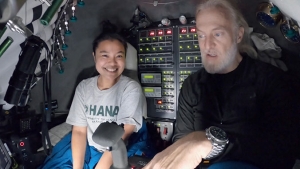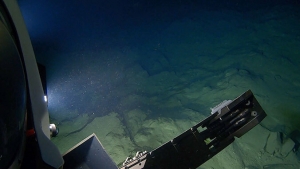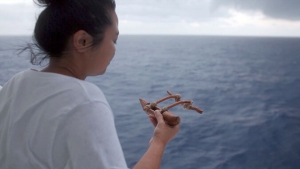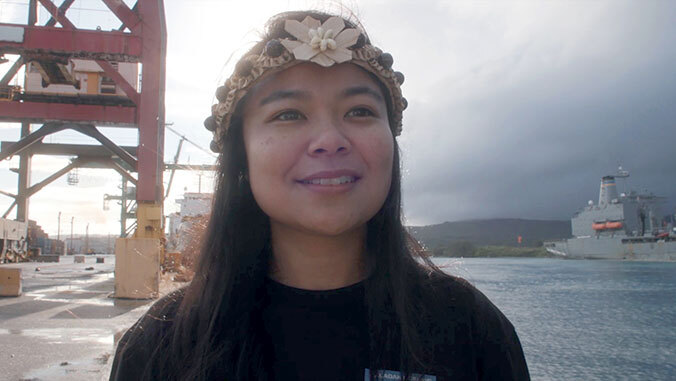A University of Hawaiʻi at Mānoa graduate student is the first Pacific Islander to voyage to the deepest part of the Earth, the Mariana Trench, and its deepest region, the Challenger Deep (35,827 feet), on March 11, 2021.
Nicole Yamase, a PhD candidate in the UH Mānoa Marine Biology Graduate Program, explored the Western pool of the Challenger Deep with Victor Vescovo, a deep-ocean explorer and multi-world record holder, making this the third dive ever to this location. Yamase was also the first marine botanist, youngest female and third woman to ever visit Challenger Deep.
“I couldn’t believe my eyes when I saw the fine silt bottom of the Challenger Deep through the small window. We were hovering 2 meters off the ground,” said Yamase. “This was the moment I was preparing for and it was finally here. All I could think about was how proud my ancestors and the whole Pacific Island community would be.”


“I hope this experience inspires other young Pacific Islanders to pursue STEM fields and higher education, so that they can serve as role models for the next generations,” added Yamase.
This event is an example of UH Mānoa’s goal of Excellence in Research: Advancing the Research and Creative Work Enterprise (PDF), one of four goals identified in the 2015–25 Strategic Plan (PDF), updated in December 2020.
10-hour expedition
Because the Challenger Deep is located in the Exclusive Economic Zone (EEZ) ocean territory for the Federated States of Micronesia, Yamase was nominated by the Micronesia Conservation Trust in partnership with the Waitt Institute to represent her country.
Vescovo, owner of the 224-foot research vessel DSSV Pressure Drop and the only commercially certified submersible that is capable of reaching any ocean depth multiple times, piloted the two-person submersible to the Challenger Deep. Four hours after leaving the surface, Yamase and Vescovo made it to the bottom and spent 2 hours exploring the eastern part of the pool, an area no human, to their knowledge, has ever been before. Then they took another 4-hour ride back up to the surface, spending a total of 10 hours underwater.
Yamase brought down a few personal items, one being a hand-size model canoe that belongs to her father, Dennis Yamase, who is a UH Mānoa William S. Richardson School of Law alum. The canoe represented her father being her first inspiration to pursue undergraduate and now graduate studies in marine biology. Yamase reflected, “I’ve identified as a Micronesian. The canoe also represents my mother’s family from Pohnpei and Chuuk. She instilled in all her children the values of respect for others, our traditional culture and my natural surroundings, as well as an appreciation for our diverse background.”
Shallow reefs connect to deep ocean

Yamase’s research focuses on shallow-water communities, specifically macroalgae—the foundation of the food web. Some of the energy that supported life in Challenger Deep may have been contributed by dead plant material that has made its way to the bottom via marine snow, a shower of organic material falling from upper waters to the deep ocean.
“And now I could see, quite literally how these reefs in the Federated States of Micronesia are connected with the deepest place on Earth,” added Yamase.
After seeing debris (tethers) at the bottom of the ocean, this pushes Yamase to finish her degree and be a part of organizations that help protect the full reef from shallow waters to deep ocean.
“Yamase’s inspiring voyage to the Challenger Deep is a once-in-a-lifetime journey to a place that less than 20 people visited before in human history,” said Malte Stuecker, an assistant professor at UH Mānoa’s Department of Oceanography and International Pacific Research Center. “In addition to being an explorer, Nicole is currently finishing her graduate studies in marine biology and working as a teaching assistant for the ‘Sustainability in a Changing World’ class offered in the Oceanography Department.”


